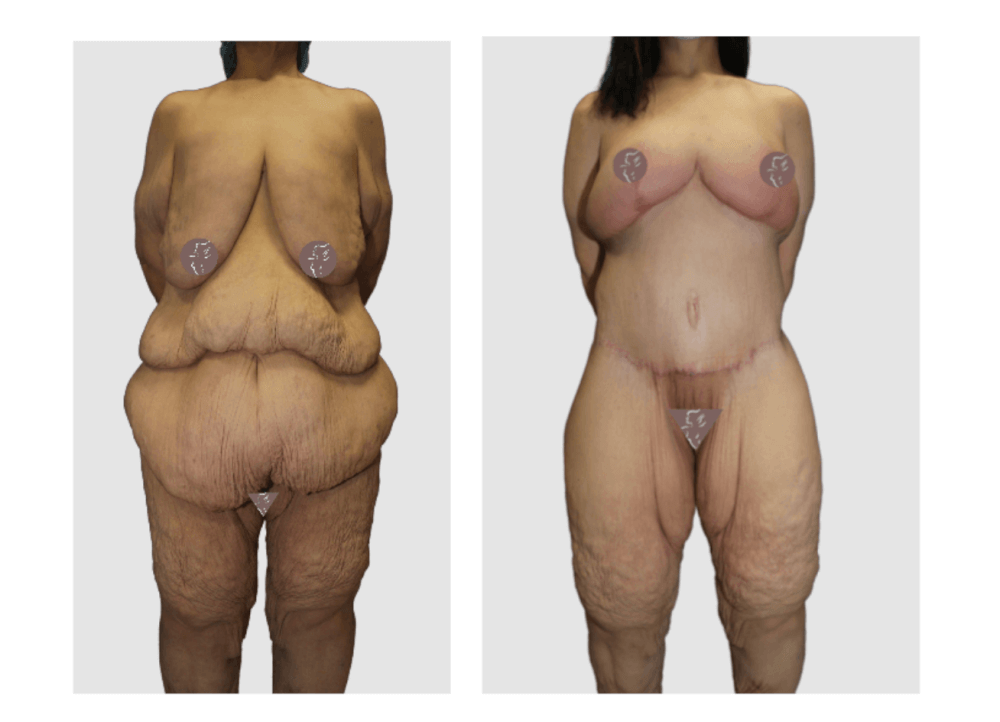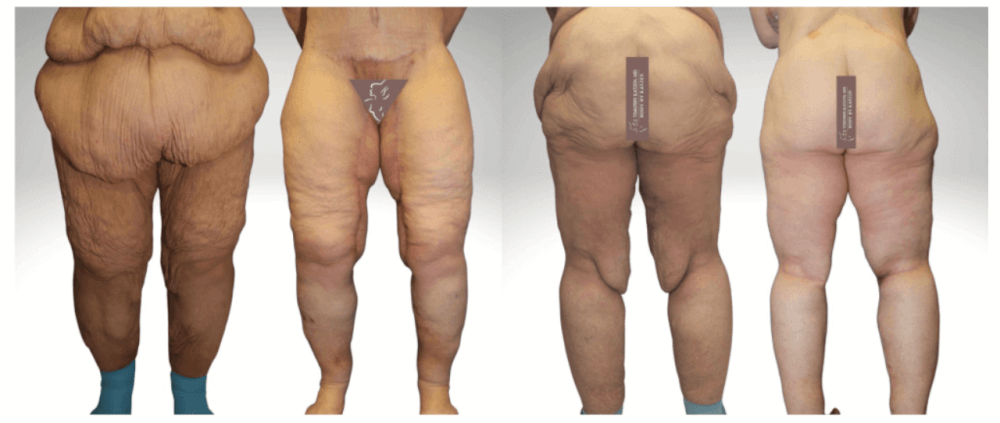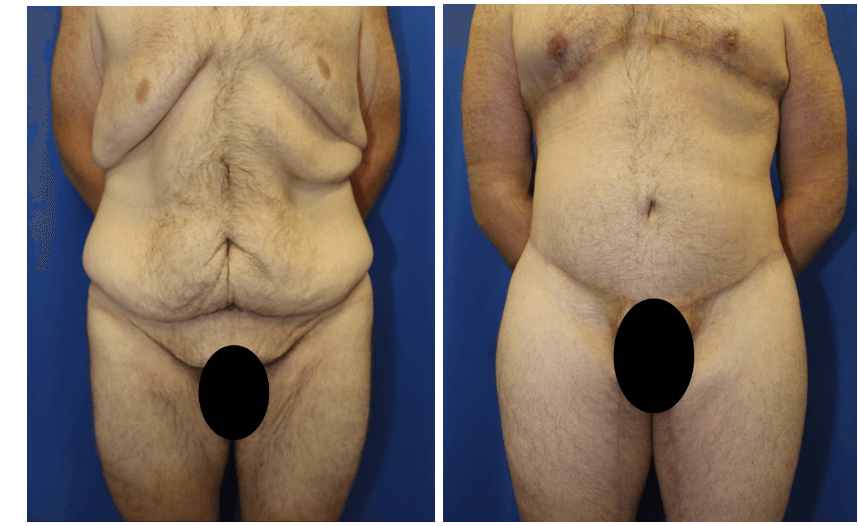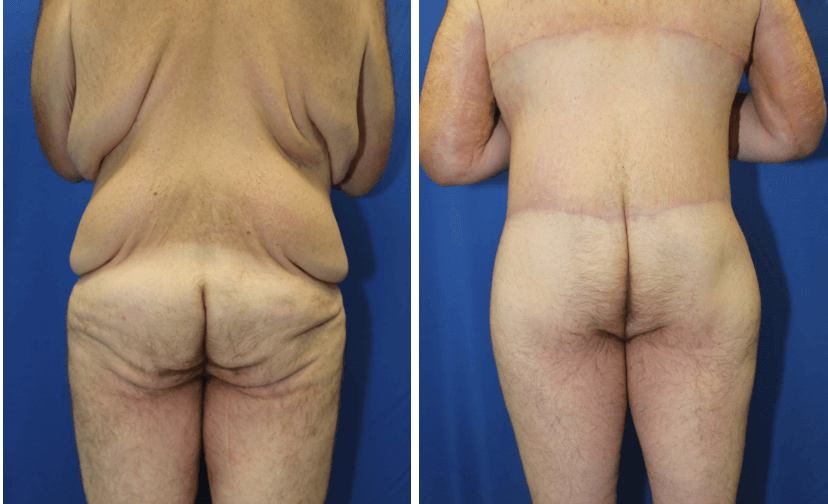Body Lifts: A 360° Transformation
12/11/2023
For over 20 years, Dr. J. Timothy Katzen has specialized in the 360 lower body lift, helping countless individuals find closure in their weight loss journeys. This blog delves into the profound stories of patients shedding significant weight, the intricacies of the 360 body lift that addresses the tummy, hips, outer thighs and buttocks, and guidance on assessing one's candidacy for the procedure. Dr. Katzen further discusses the importance of staging procedures, detailing subsequent surgeries like the thigh lift and upper body treatments. Embark on an educational exploration of what can be achieved with body contouring and the dedication required to achieve the ideal physique.
Introduction
For over two decades, I have dedicated my professional journey to the art and science of plastic surgery. With the rise in demand for comprehensive body contouring, especially following significant weight loss, the 360 lower body lift has emerged as a cornerstone procedure in my practice. Through this medium, I aim to offer a deeper insight into this life-changing surgery, its benefits, and candidacy for prospective patients.
Many patients come to me with incredible weight loss narratives and testimonies of determination and perseverance. Their journeys often reflect weight reductions ranging from 60 to 300 lbs, a testament to their unwavering commitment. These individuals know firsthand the challenges of health complications that often accompany obesity. I love being a part of their weight loss journey. They've triumphed in shedding the weight and fat but are often left with the lingering reminder of their past in the form of excess skin and stubborn pockets of fat. They long to close this chapter, allowing them to fully embrace their new body.
What is a 360 Lower Body Lift?
The human body is an intricate tapestry of bones, muscles, tissues, and skin. Over time, and for various reasons like aging, weight fluctuations, or genetic predispositions, your body might exhibit sagging, especially in the lower body region. The 360-degree lower body lift is a surgical procedure designed to address multiple areas of concern following significant weight loss. Specifically, this surgery targets the tummy, hips, and buttocks. For the abdominal region, the procedure functions similarly to a tummy tuck. This procedure involves not just the removal of excess skin, rectus abdominis muscle plication, and pubic lift. Muscle plication reinforces and tightens the underlying abdominal muscles, resulting in a firmer and flatter stomach. Moving laterally, the procedure addresses the hips through a lift and reduction, sculpting them to create a more harmonious and streamlined silhouette. Finally, the buttocks are also given attention through a lift, elevating them to a more youthful position and ensuring a balanced and aesthetically pleasing contour. The 360-degree lower body lift offers a complete rejuvenation of the mid and lower body, reflecting the dedication and hard work patients have put into their weight loss journeys.
Who is an Ideal Candidate?
The decision to undergo any surgical procedure must be well-informed. For the 360 lower body lift, potential candidates often include:
1. Individuals with Significant Weight Loss: Those who have shed considerable weight, either naturally or post-bariatric surgery, now grapple with redundant skin and tissues.
2. Aging Population: As we age, our skin loses elasticity. Individuals in their later years who wish for a more youthful contour might consider this procedure.
3. Genetic Predisposition: Some individuals naturally have excess skin or fat in their lower bodies. Genetics can sometimes dictate the distribution and holding of weight in certain areas.
A thorough medical evaluation, understanding patient goals, and setting realistic expectations are paramount before finalizing the decision.
The Procedure: Step by Step
Being well-acquainted with the procedure aids in demystifying it:
1. Incision: The surgery begins with an incision that extends around the waist, like a belt. This incision allows for the removal of excess tissue and reshaping of the lower body.
2. Tissue Removal and Reshaping: After the incision, excess skin and fat are methodically excised. The underlying tissues are then tightened, and the skin is re-draped to showcase the new contours.
3. Closure: Sutures, skin adhesives, or clips might be used to close the incisions.
4. Recovery: After-surgery, there's a recovery period, typically involving some swelling, bruising and discomfort. All these conditions which subsides with time. Following post-operative guidelines diligently maximizes the chance for optimal healing and results.
Benefits of the 360 Lower Body Lift
The transformative power of the 360 lower body lift isn't restricted to mere aesthetics. This procedure offers:
1. Enhanced Contour: The primary benefit is a more defined and toned lower body contour.
2. Boosted Self-confidence: A harmonized physique often translates to renewed self-assurance.
3. Alleviated Discomfort: Removal of excess skin could diminish issues like skin irritations or rashes often associated with skin folds.
4. Increased Ability to Exercise: The sheer reduction of excess skin and fat can allow you to exercise better, become more fit and lose even more weight.
One Step at a Time
Specifically for post-weight loss individuals, achieving the desired transformation necessitates a multi-step approach. When multiple body regions cause distress, staging the procedures becomes imperative, not only for optimal results but also for patient safety and recovery. This journey requires both physical and mental fortitude.
Usually, the 360-degree lower body lift stands as the initial procedure. For many, the abdominal region represents the most significant area of concern. Addressing this region first can offer a substantial boost in confidence, setting the stage for subsequent procedures.
Following the body lift, thighs often become the focal point. A thigh lift and reduction, frequently chosen by post-weight loss individuals, aim to alleviate drooping skin and restore a firmer, more youthful appearance to the legs.
Simultaneously, upper body contouring merits consideration. Depending on an individual's specific needs, upper body surgery may include a back lift and reduction. The back lift targets excess skin and fat in the upper torso area. Sometimes an arm lift and reduction is performed during a back lift. The arm lift procedure addresses 'bat wings' or sagging skin on the upper arms, a common concern among those who have lost significant weight.
Staging these procedures appropriately is essential, allowing the body time to heal. A gap of around one to two months between surgeries is recommended, ensuring the body has adequately recovered and is ready for the next phase. Following this methodical approach, many individuals can complete their comprehensive body transformation within approximately nine months.
Patient Journey
This patient is a 44-year-old female from Nevada who decided to turn her life around when she reached 556 lbs. She dieted, exercised, and underwent gastric bypass surgery. She lost 350 lbs.! After her weight loss plateaued, she presented for an evaluation and consultation. Losing large amounts of weight was highly beneficial to her health and well-being. However, the side effects of massive weight loss include loose, excess skin that can only be corrected with surgery. Diet and exercise alone will not correct skin issues like these.
On physical examination, this patient's abdomen hung halfway down her thighs and completely covered her pubic region. She had a large buttock and disproportionate hips. Her thighs were large, from her groin to her ankles. Her breasts were deflated and hung below her belly button. Also, she had large upper arms. Heavy, excess skin and fat caused extreme discomfort and pain while performing daily tasks. Also, this excess skin and fat made exercising extremely difficult.
This patient desired a full-body transformation. I advised her to stage her surgeries into three parts. Stage 1: 360 circumferential lower body lift, which included abdominoplasty (tummy tuck), hip lift and reduction, and buttock lift and reduction. Stage 2: brachioplasty with arm liposuction (arm lift and reduction), anchor mastopexy (breast lift and reduction), and vertical torsoplasty. Stage 3: longitudinal medial thigh lift and reduction (with thigh liposuction) and calf reduction.


Among the many stories that underscore the transformative power of body contouring is that of a 27-year-old male who is 6'4". At one point, his scale tipped above 500 pounds. Through an admirable commitment to diet and exercise, he shed an astounding 270 pounds. He traveled from Florida to California to get the 360-body lift. During this procedure, a medial thigh lift was also performed. This surgery resulted in the removal of 13 pounds of superfluous skin and fat, marking a significant chapter in his journey toward achieving his desired physique. He later came in for a horizontal torsoplasty, chest reduction, and arm lift and reduction to remove excess skin from his upper body. Below are his results.


Conclusion
The 360 lower body lift stands out for its comprehensive approach to lower body rejuvenation, especially after weight loss. As someone who has been at the forefront of this procedure for over 20 years, I can vouch for its transformative potential. However, as with any surgical intervention, the key lies in individualized care, realistic expectations, and meticulous post-operative compliance.
If you want to learn more about this procedure, please call 310-859-7770 or email [email protected] for a consultation. We look forward to seeing if you're a good candidate for a 360 lower body lift or other reconstructive procedures.